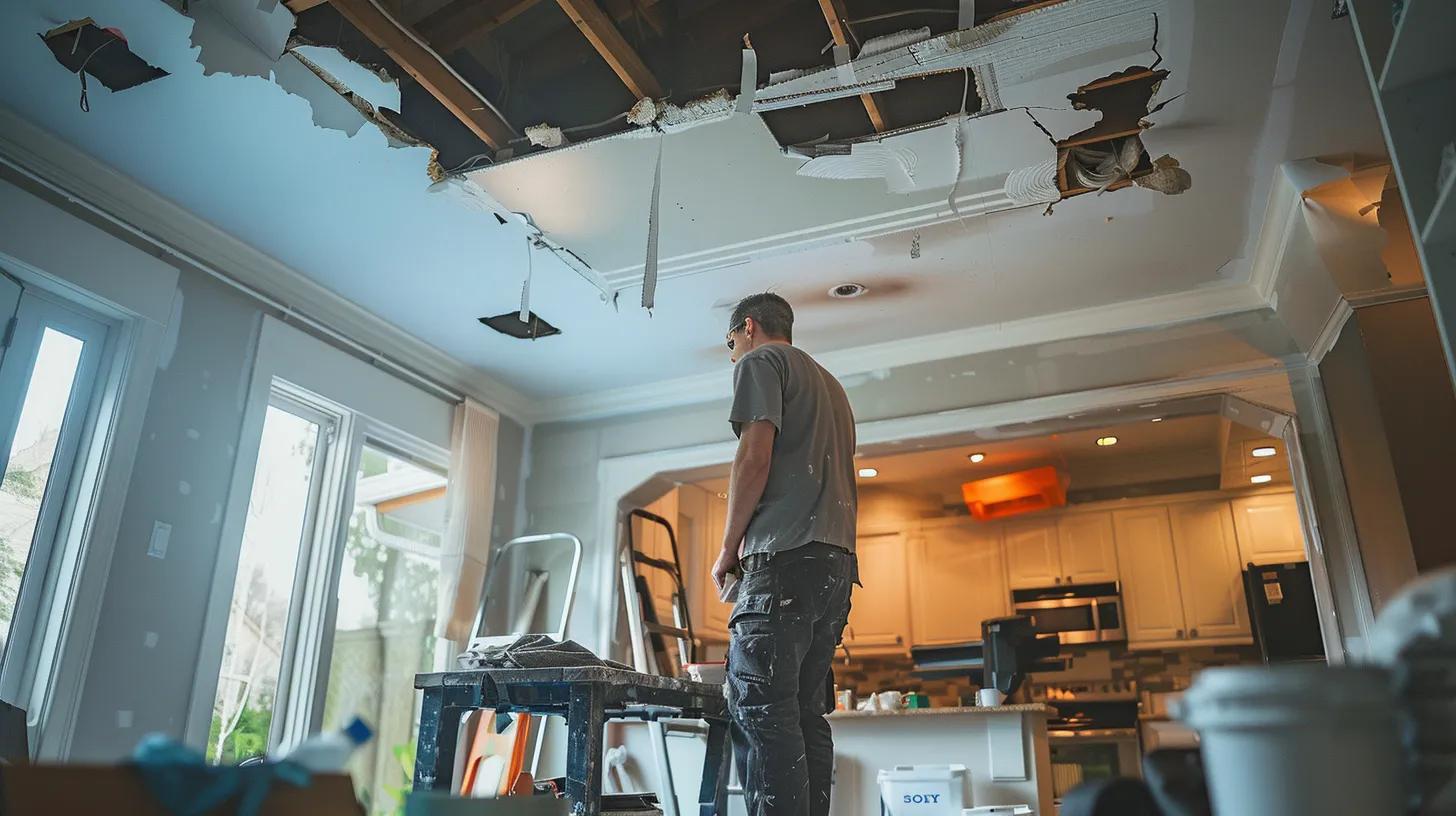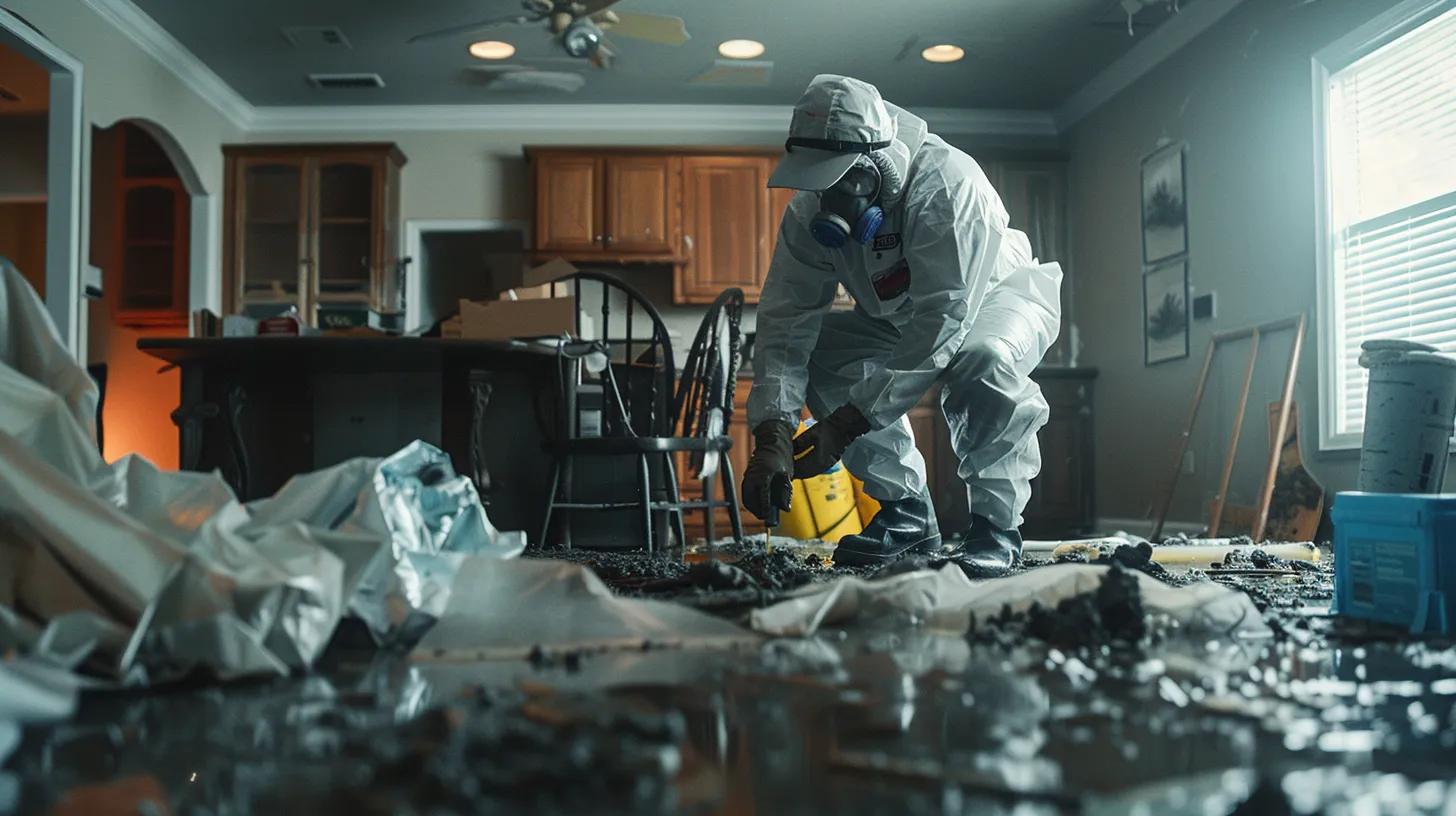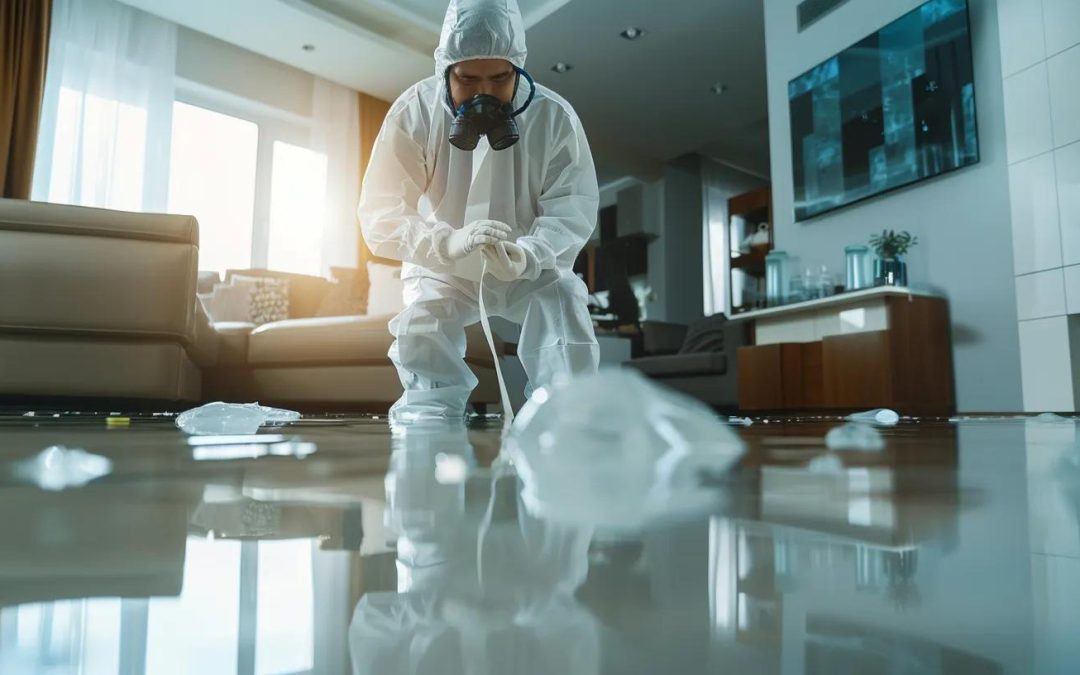
Common Mistakes in Storm Damage Restoration to Avoid
Storm events can devastate properties by causing both visible and hidden damage that may worsen over time. Many property owners in New York and the surrounding areas underestimate the impact of storm damage. Restoration experts emphasize that a thorough, measured approach is essential before beginning any repairs. Neglecting proper assessments, rushing cleaning, ignoring safety precautions, or avoiding professional help can lead to further structural issues, insurance complications, and higher long-term costs. This article highlights common mistakes in storm damage restoration and offers clear recommendations to help property owners protect both their properties and the safety of occupants.
Avoid Underestimating the Impact of Storm Damage on Properties
Storms can affect both residential and commercial properties, often in ways that are not immediately apparent. Restoration experts warn that damage may extend beyond superficial issues. Hidden water intrusion, minor cracks, and deteriorated materials can lead to major structural or health hazards later if not addressed promptly.
Recognize the Signs of Hidden Damage After a Storm
Visible damage—such as broken windows and dented roofs—is only part of the story. Less obvious signs include:
• Water seepage and stains on walls or ceilings
• Early mold growth and dampness
• Cracks in walls, warped wood, or weakened support beams
These signs indicate internal damage that, if left untreated, may lead to more serious problems like mold proliferation or structural decay. Restoration experts recommend using moisture meters or thermal imaging to detect hidden issues, as early intervention can reduce remediation costs significantly.
Inspect All Areas Affected by the Storm, Including Roofs and Basements
A complete inspection should cover every section of the property. Key points include:
• Roofs: Check for loose, missing, or damaged shingles and inspect gutters and downspouts for proper drainage.
• Exterior walls, windows, and doors: Look for gaps, cracks, and other signs of stress.
• Basements and crawl spaces: These areas may conceal moisture, cracks, or mold growth that compromise structural stability.
Neglecting even a small area can lead to long-term issues and higher repair costs. Professionals, sometimes using drones or moisture sensors, can provide thorough documentation for insurance claims and repairs.
Assess Structural Stability and Potential Safety Hazards
Beyond cosmetic damage, it is vital to evaluate the building’s structural integrity. Restoration experts advise that any signs of:
• Sagging roofs or shifting foundations
• Warped beams or deteriorated load-bearing walls
should prompt a detailed evaluation by a licensed engineer. Even minimal water penetration into support structures can eventually lead to steel corrosion or wood rot, affecting the building’s durability and safety. Regular, detailed assessments help prevent further damage and safeguard both property value and occupant safety.
Don’t Rush the Storm Damage Assessment Process
In the urgency following a storm, property owners may skip necessary steps in assessing damage. Rushing can result in missed issues and subsequent repair problems.

Take the Time to Document All Damage Thoroughly
Detailed documentation of damage is critical. Restoration experts suggest that homeowners:
• Take high-resolution photos and videos from multiple angles
• Record detailed notes on visible and hidden damage
• Use specialized tools, such as drones or 3D imaging, for hard-to-reach areas
Thorough documentation helps ensure that insurance companies honor claims and that repairs address all problems. A systematic checklist of all damage can aid in prioritizing repairs and avoiding costly rework later.
Use Photos to Capture the Extent of the Destruction
Photos provide an objective and detailed record of the damage. They should capture:
• Obvious issues like shattered windows and broken siding
• Subtle problems such as damp patches and discoloration
Using time-stamped images helps track repair progress and strengthens insurance claims. A well-organized photo archive can even lead to better insurance settlements.
Engage Professionals for a Comprehensive Evaluation
Early involvement of professional restoration experts is key. They bring specialized equipment and experience to accurately assess damage, including hidden issues. Professional evaluations typically include:
• Infrared cameras and moisture meters for internal damage
• Detailed reports to support insurance claims
Engaging professionals ensures a complete and accurate assessment, thus preventing incomplete repairs and additional hazards. Their expertise improves both the efficiency and safety of the restoration process.
Skip Over Cleaning and Drying Properly After Storms
Often, in the rush to repair, homeowners skip thorough cleaning and drying. However, inadequate cleaning can lead to secondary problems like mold infestation and corrosion.
Remove Water Quickly to Prevent Mold Growth
Water intrusion creates an ideal environment for mold and bacteria. Restoration experts stress the importance of rapid water removal to avoid:
• Prolonged moisture exposure
• Mold growth in porous materials like drywall or insulation
Using specialized equipment such as industrial dehumidifiers, high-powered fans, and water extractors can significantly reduce mold growth risk if initiated within the first 48 hours.
Use Specialized Equipment for Thorough Drying
Natural drying methods may not be effective for storm damage. Instead, property owners should use:
• Commercial-grade dehumidifiers and air movers
• Thermal imaging devices to locate remaining moisture pockets
This specialized equipment ensures that all surfaces are dried thoroughly, reducing the likelihood of recurrent damage and lowering future repair costs.
Implement Proper Cleaning Protocols for Affected Areas
Effective cleaning goes beyond removing visible debris; it involves eliminating contaminants and pollutants that hinder proper drying. Key steps include:
• Removing loose debris and dirt
• Using eco-friendly, non-toxic cleaning agents to sanitize surfaces
• Deep cleaning of HVAC systems, which can spread allergens if left untreated
Documenting the cleaning process is also important for insurance purposes and helps in monitoring the success of the restoration work.
Avoid Ignoring Safety Precautions During Restoration
Working in storm-damaged properties can be hazardous. Restoration experts emphasize strict adherence to safety protocols to prevent injuries and further damage.

Wear Protective Gear When Assessing Damages
Proper personal protective equipment (PPE) is essential when evaluating storm damage. Items include:
• Sturdy work gloves, helmets, and eye protection
• Respiratory masks to guard against airborne mold spores and contaminants
This equipment minimizes the risk of injuries and prevents health problems associated with exposure to hazardous materials.
Ensure Electrical Systems Are Inspected by Professionals
Storms can damage electrical systems even if damage is not immediately visible. Restoration experts advise that:
• All electrical components be inspected by certified professionals before re-energizing
• Inspections cover wiring, outlets, and main electrical panels for any signs of water intrusion
Proper inspection helps prevent risks such as electric shocks, fires, and other serious hazards.
Avoid Entering Structurally Compromised Buildings
Buildings that appear intact externally may have hidden structural issues. Restoration experts warn against:
• Entering buildings with sagging ceilings, damaged support beams, or compromised foundations
• Ignoring warning signs that could lead to catastrophic failure
Only enter such structures after a professional evaluation confirms they are safe.
Don’t Neglect Professional Help When Needed
Even though DIY fixes might seem cost-effective, storm damage restoration is complex and often requires professional intervention.
Identify Situations That Warrant Professional Intervention
Not every damage situation is suitable for a homeowner’s repair efforts. Professional intervention is necessary for:
• Significant structural compromises
• Extensive water damage or widespread mold growth
• Electrical hazards that require certified expertise
Licensed restoration professionals possess the tools and experience to manage these challenges safely and effectively, reducing the risk of further damage.
Choose Reputable Restoration Experts With Good Reviews
When hiring professionals, it is important to select a reputable company. Key factors to consider are:
• Verified customer testimonials and industry certifications
• Transparent pricing, detailed service plans, and comprehensive warranties
• Availability for emergency response and proper insurance coverage
A careful selection process ensures better outcomes and can even speed up the insurance claims process.
Understand the Scope of Services Offered by Professionals
Before hiring a restoration company, property owners should clearly understand the range of services provided. Most comprehensive services include:
• Emergency response and damage assessment
• Water extraction, structural drying, and thorough cleaning
• Complete repair work with follow-up evaluations
Clear contracts and detailed service agreements help avoid any gaps in the workflow and ensure that every aspect of the damage is addressed.
Refrain From Overlooking Insurance Assistance Options
Insurance is a critical element of storm damage restoration, yet many homeowners neglect it. Restoration experts advise that homeowners:
• Review their policies carefully to understand coverage limits and exclusions
• File claims promptly with detailed documentation of all damage
• Maintain thorough records of all interactions with insurance providers
Properly leveraging insurance assistance can help offset repair costs and expedite the restoration process.
Review Your Insurance Policy for Storm Damage Coverage
A careful review of the insurance policy helps ensure adequate protection. Property owners should:
• Consult with insurance agents or legal advisors to clarify deductibles, exclusions, and claim limits
• Update policies to cover secondary effects such as mold growth or structural weakening caused by water intrusion
Understanding these details in advance prevents surprises during the claim process and protects against out-of-pocket expenses.
File Claims Promptly to Expedite the Process
Timely filing of insurance claims is crucial. Restoration experts recommend that homeowners:
• Document all damage immediately and report it to the insurance company without delay
• Keep detailed records, as prompt reporting can help reduce processing times and expedite fund releases
Quick claims filing supports faster repairs and contributes to a more efficient restoration effort.
Keep Detailed Records of All Communications With Insurers
Maintaining comprehensive records of correspondence with insurance companies is essential. Homeowners should:
• Log every email, phone call, and written communication
• Preserve photographic evidence and written documentation of the damage
Well-organized records help resolve any disputes and serve as proof of the restoration process, ensuring a smoother claims experience.
Final Thoughts
Storm damage restoration requires careful planning, detailed assessments, and strict adherence to safety protocols. Avoiding common mistakes—such as underestimating hidden damage, rushing evaluations, neglecting proper cleaning and drying, ignoring safety precautions, or bypassing professional help—can save significant time and money. Restoration experts strongly recommend a complete, safe, and meticulously documented restoration process that meets insurance requirements and preserves the property’s integrity.
By following the strategies outlined in this guide, homeowners and property managers can reduce long-term repair costs and prevent further hazards. Professional input, precise documentation, and prompt insurance engagement remain the key factors for a successful recovery.
Frequently Asked Questions
Q: What are the main risks of underestimating storm damage?
A: Underestimating storm damage can lead to hidden structural failures, increased mold growth, and unaddressed water damage, all of which may escalate repair costs and jeopardize occupant safety.
Q: Why is it essential to document storm damage thoroughly?
A: Detailed documentation—including photos and professional assessments—provides critical evidence for insurance claims and serves as a roadmap for effective restoration, reducing the chance of overlooked damage.
Q: How quickly should water be removed from a damaged property?
A: Water should be removed immediately, preferably within 48 hours, to prevent mold growth and additional structural damage. Using professional-grade dehumidifiers and air movers accelerates this process.
Q: When should professional restoration experts be involved?
A: Professional intervention is necessary when damage exceeds basic repair, particularly in cases of structural instability, extensive water intrusion, electrical hazards, or widespread mold.
Q: How can homeowners ensure their insurance claim is successful?
A: Homeowners should review their insurance policies thoroughly, file claims promptly, and maintain detailed records of damages and communications. Professional documentation further supports a successful claim.
Q: What safety precautions should be taken during the restoration process?
A: It is crucial to use appropriate personal protective equipment, have electrical systems inspected by certified professionals, and avoid entering compromised areas until they are deemed safe by experts.
Q: How do proper cleaning and drying methods affect restoration outcomes?
A: Proper cleaning and thorough drying prevent secondary issues such as mold and material degradation. Using specialized equipment ensures all moisture is eliminated, preserving structural integrity and minimizing future problems.
